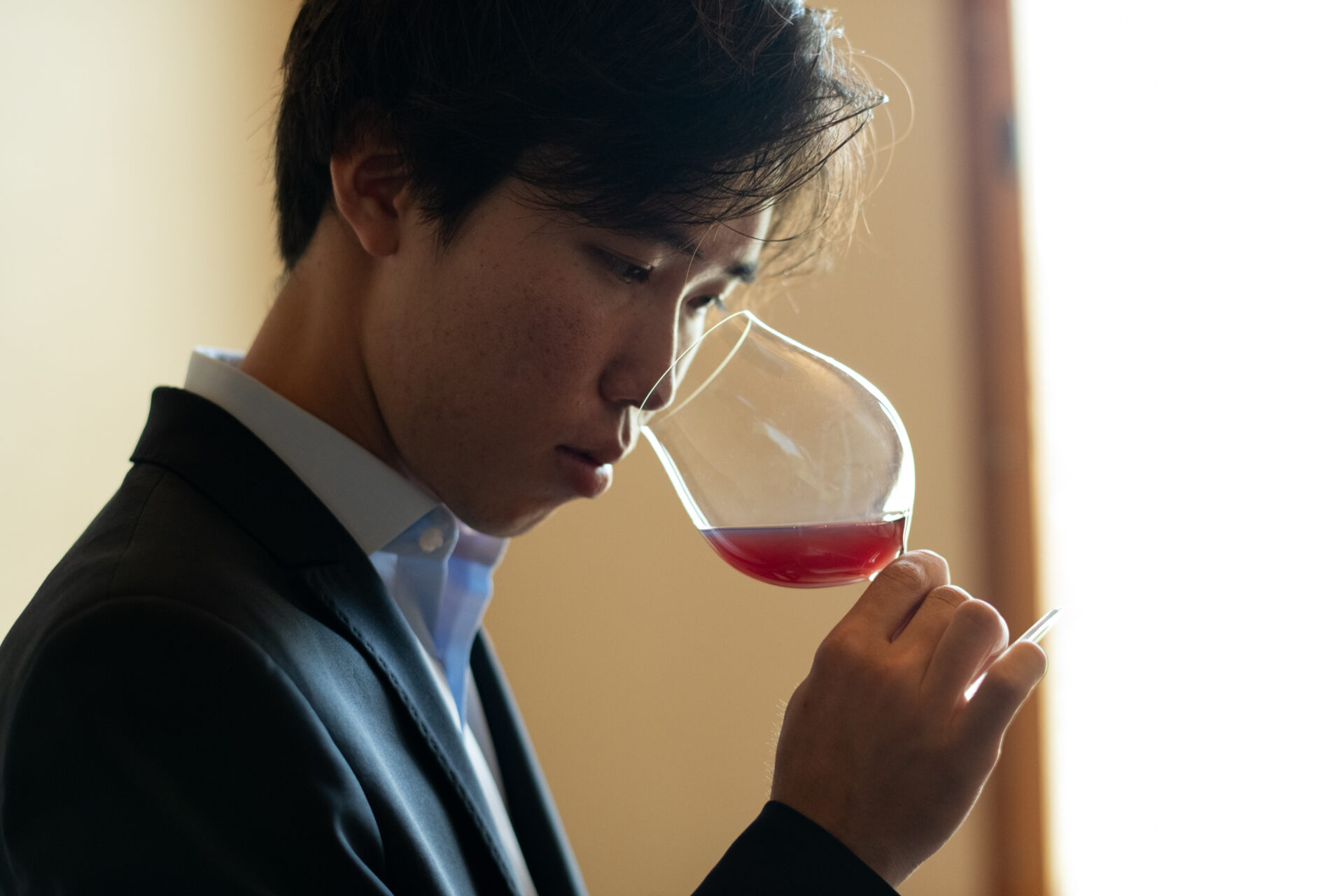Becoming a Master Sommelier at one of Japan’s most popular wineries
Toru Takamatsu is currently 27 years old.
He is the youngest Master Sommelier in the world and the first person in Japan to obtain the certification.
The Master Sommelier is the highest ranked certification of the Court of Master Sommeliers (CMS), a sommelier organization established in the United Kingdom in 1977, and it is regarded as the most difficult of all sommelier certifications in the world. Only 3 to 8 percent of those who take the exam pass, and there are currently only 274 sommeliers in the world who hold this certification.
Of course, the value holding of such certification is incredible, and its holders are sought after by top restaurants around the world, where they work as head sommeliers and supervise the restaurant’s wine lists.
Currently, Takamatsu has joined the community-reactivating cooperator squad in Yoichi Town, Hokkaido since May 2021 and began working for Takahiko Soga, owner of Domaine Takahiko, a winery whose wine is known as the most difficult wine to obtain in Japan.

Working and serving people as a sommelier and learning about wine making at a winery are completely different jobs.
What went through the mind of the young Master Sommelier to choose this new path? What is his vision for the future as a Master Sommelier?
When we visited Domaine Takahiko and met with Takamatsu, we found a soft spoken and shy young man who smiled as he said, “I am having the best time of my life here.”
Beginnings as a barista
Takamatsu was born in Sydney in 1995. His father was a chef who was working in Sydney so he grew up in Australia.
When he was 15 years old, like any young person he wanted money that he could spend freely, so he started working part time. He found a job at a new cafe that his father’s work place and restaurant was opening.
Takamatsu had been attending a private school that started at nursery and continued to high school, however, when he turned 16, his father decided to open his own restaurant and needed extra funds. That was also when Takamatsu transferred to a local public high school. “I was not very interested in studying in school,” Takamatsu recalls, so rather than going to school, he worked hard at his part time job at the cafe.
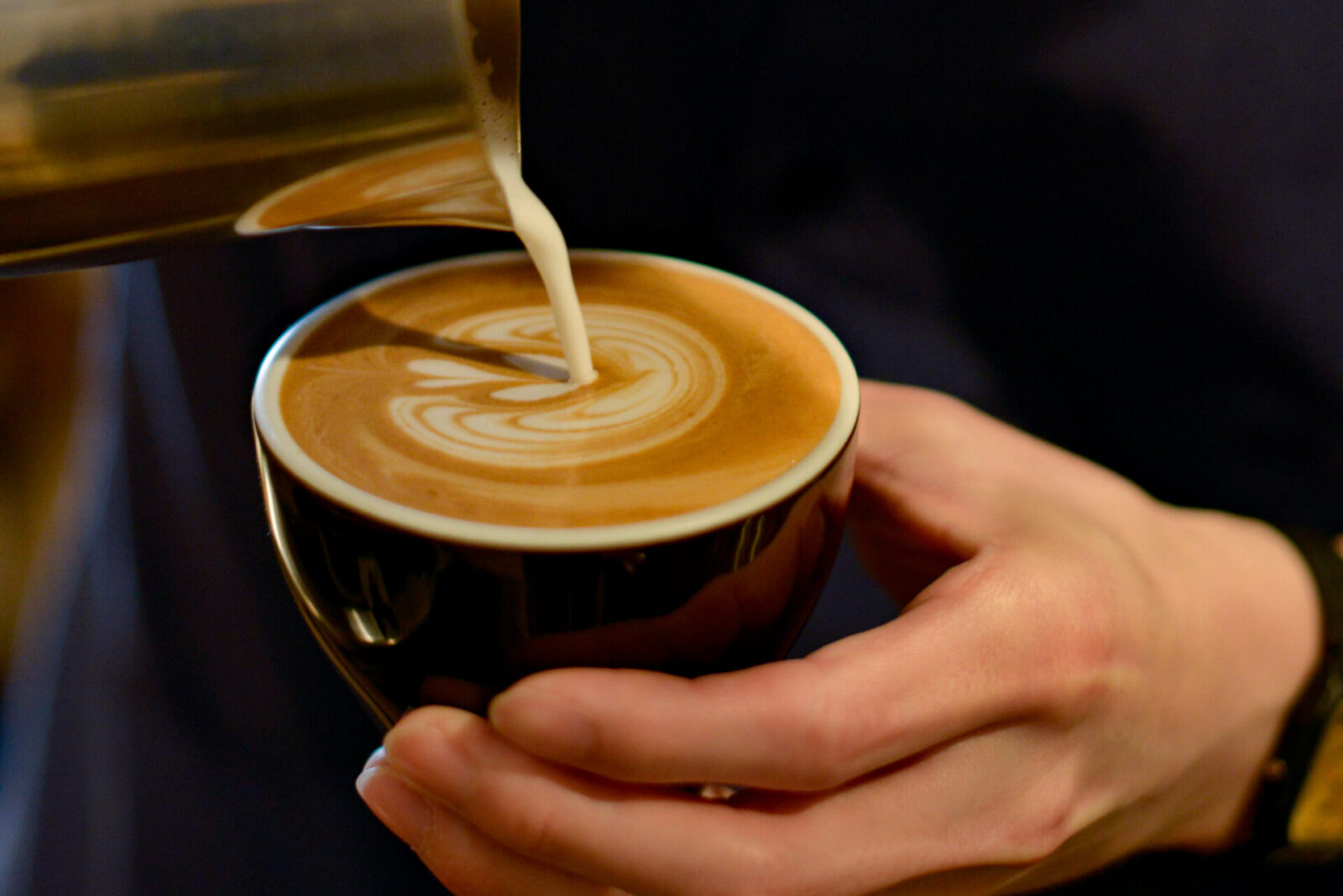
Cafe culture is very big in Sydney and there are many unique street side cafes. Takamatsu grew more and more interested in coffee so he applied to work at a popular cafe that always drew a crowd.
“The most important prerequisite for the job was the number of years of experience as a barista, so I may or may have not exaggerated a bit on my resume. I had high hopes that if I could somehow get a trial, that they would hire me. I later heard that they almost threw out my resume, but my young age caught the attention of the head barista at the time, so they gave me a chance with a trial.”
After being given the chance with the trial by the head barista, Takamatsu landed the job. The cafe was so popular that they sold 100 cups of coffee an hour. His real training to become a barista started here.
Once having gained experience at this famous cafe, he did not have trouble finding other jobs. He went on to work for numerous other famous cafes and improved his skills as a barista.
Meeting the world of wine and sommeliers
The legal drinking age in Australia is 18 years old. Takamatsu says he was not very interested in wine because he “didn’t think it tasted very good.” However, one day while he was visiting Paris with his barista friends, he was surprised by a wine he drank at a French restaurant.
“It was a French wine, Sancerre Blanc Les Monts Damnés, and a Bordeauz wine, Chateau La Lagune. Until then I did not appreciate the flavor of wine, so I wondered why everyone drank it so much. However, these wines fundamentally changed the way I understood wine.”
“What I consider a good wine today is wine that can be enjoyed over a long period of time, and the wine I had in Paris was something that I enjoyed throughout the experience. It was much more delicious than what I imagined. Our bill came out to be 20 thousand yen (roughly 140 USD) per person so I remember thinking it was expensive, but I was okay with the price because it was so delicious.”
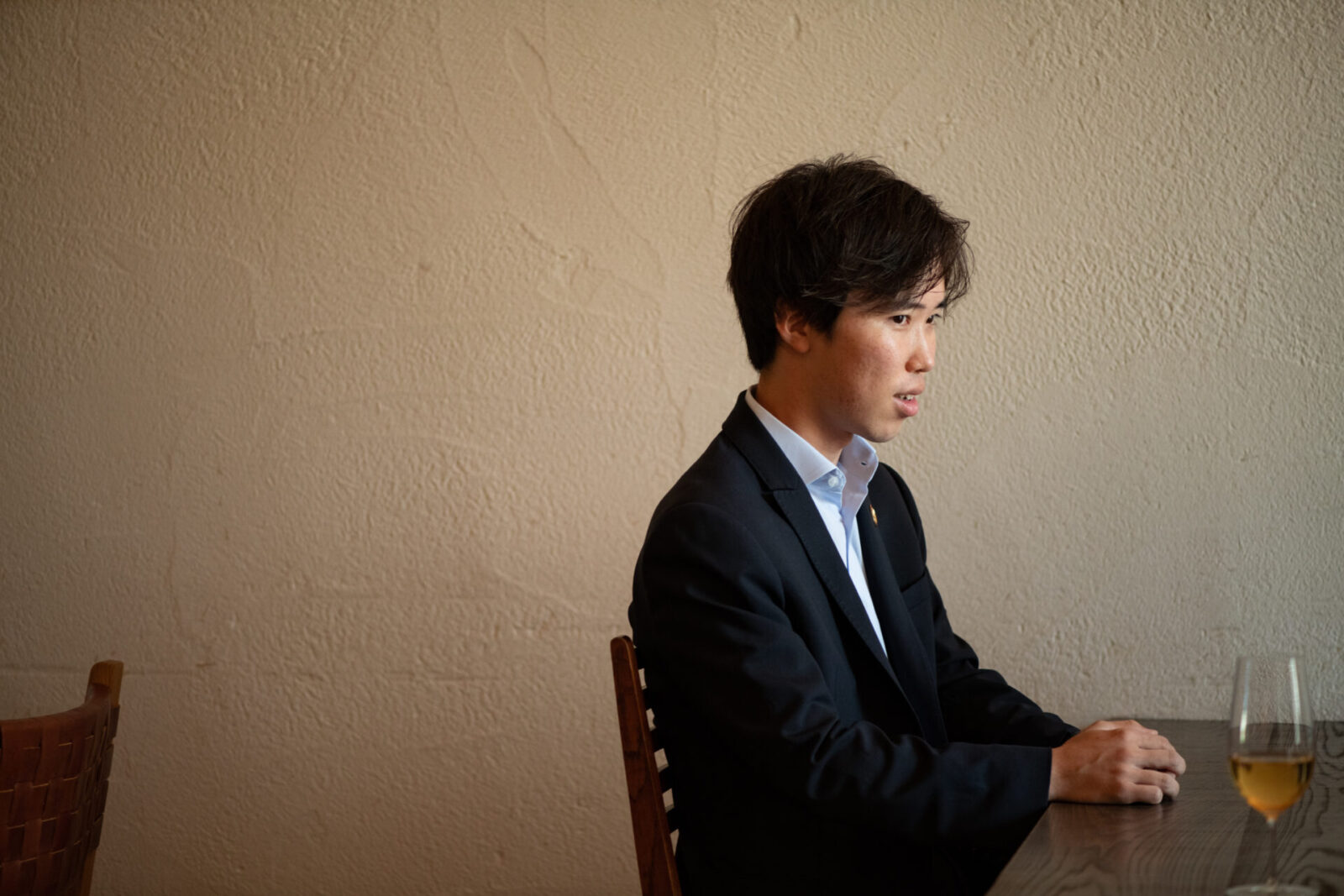
After experiencing such dinner outings several times, going out to eat in restaurants became a favorite pastime. Later, he tried his hand in becoming a chef, but it did not suit him and he returned to the coffee business when he was 19 years old.
Around this time, the head barista at his first job was opening a new cafe called Primary Coffee and Takamatsu was invited to join the team. This cafe had a restaurant style service where customers ordered from their tables, so Takamatsu naturally learned to become more conscious about working as a server.
As Takamatsu was experiencing the joys of eating out, enjoying good wine, and a new job that nurtured his interest in providing good service, he started to think about how coffee and wine are similar in that the riches of the earth are deeply connected to the taste of the product. Around this time, he began regularly going to a bar that was close to his workplace.
It was also around this time that he met Yuki Hirose, a sommelier who works at Rockpool Bar & Grill, a restaurant owned by Neil Perry, one of Australia’s leading chefs.
Being of similar Japanese background, the two naturally became friends and as Takamatsu learned more about wine from Yuki, he became more interested in exploring the world of wine.
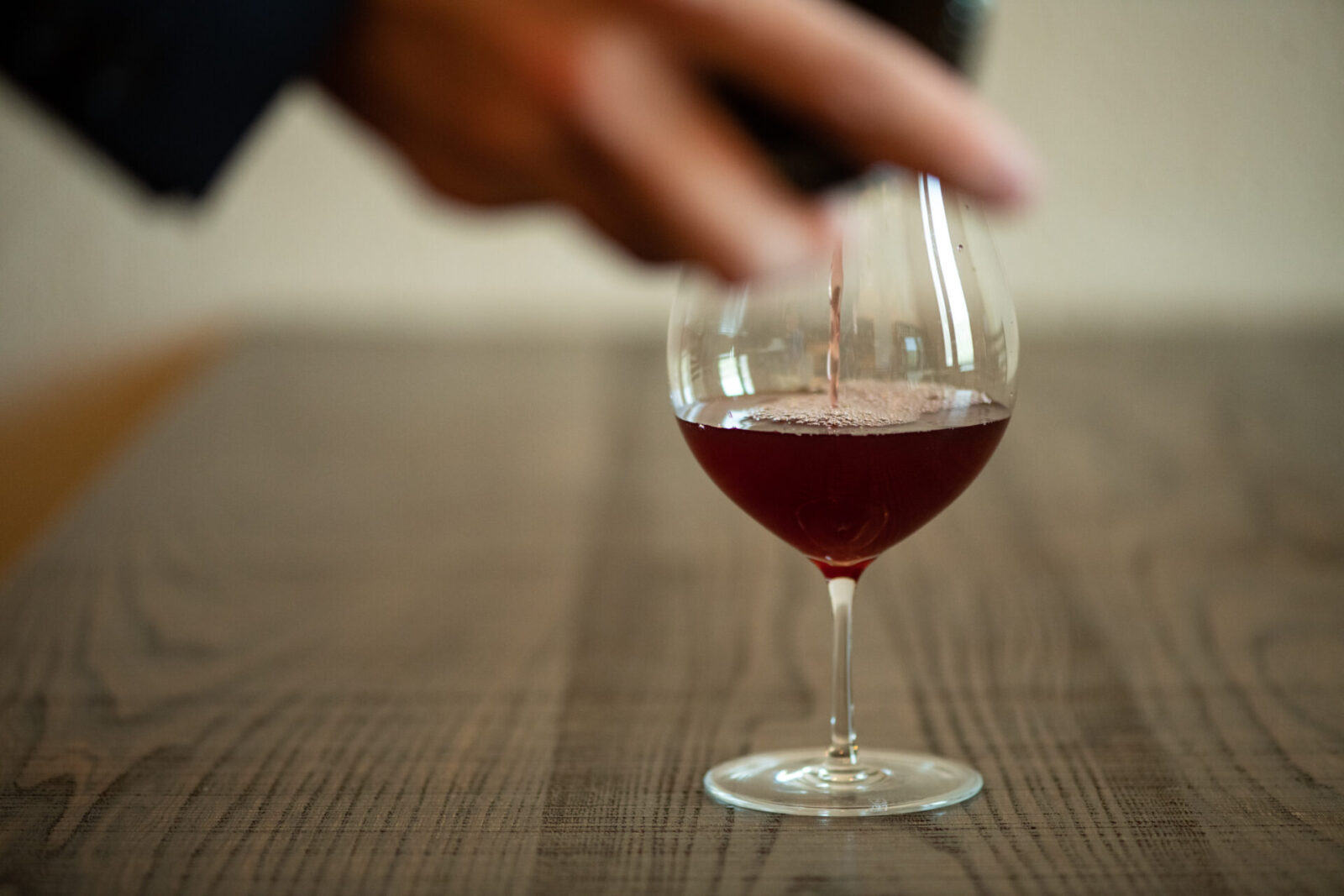
As Takamatsu started purchasing bottles of wine and tasting them at home, he became more and more enthralled by the depth of the world of wine. He even started purchasing and trying famous, high-end wines.
“I wanted to try drinking expensive wine because there must be a reason why wines such as Dom Pérignon and Romanée-conti became famous and given such a high value. I started off with Gevrey-Chambertin of Bourgogne and began buying expensive wine to try for myself.”
“I of course found them to be delicious, but I realized my knowledge of wine at the time was limited to the region of origin and the brand name. I realized that in order to be able to better explain the flavor to other people, I needed to study wine further so I began to do some serious research.”

The road to becoming a Master Sommelier
After one year of buying wine, drinking it and studying on his own, Takamatsu decided to pursue the path of becoming a sommelier.
“When I saw the way Mr. Hirose worked, I was very impressed at the style of service he provided. I knew that if I mastered the art of wine it would open new doors for me, so I was sure I would not regret studying it.”
Takamatsu sent out his resume to a number of restaurants, but the only job offer he received was from a sister restaurant of the restaurant that Hirose worked for. There, he started off by working as a food runner and began his training as a sommelier.
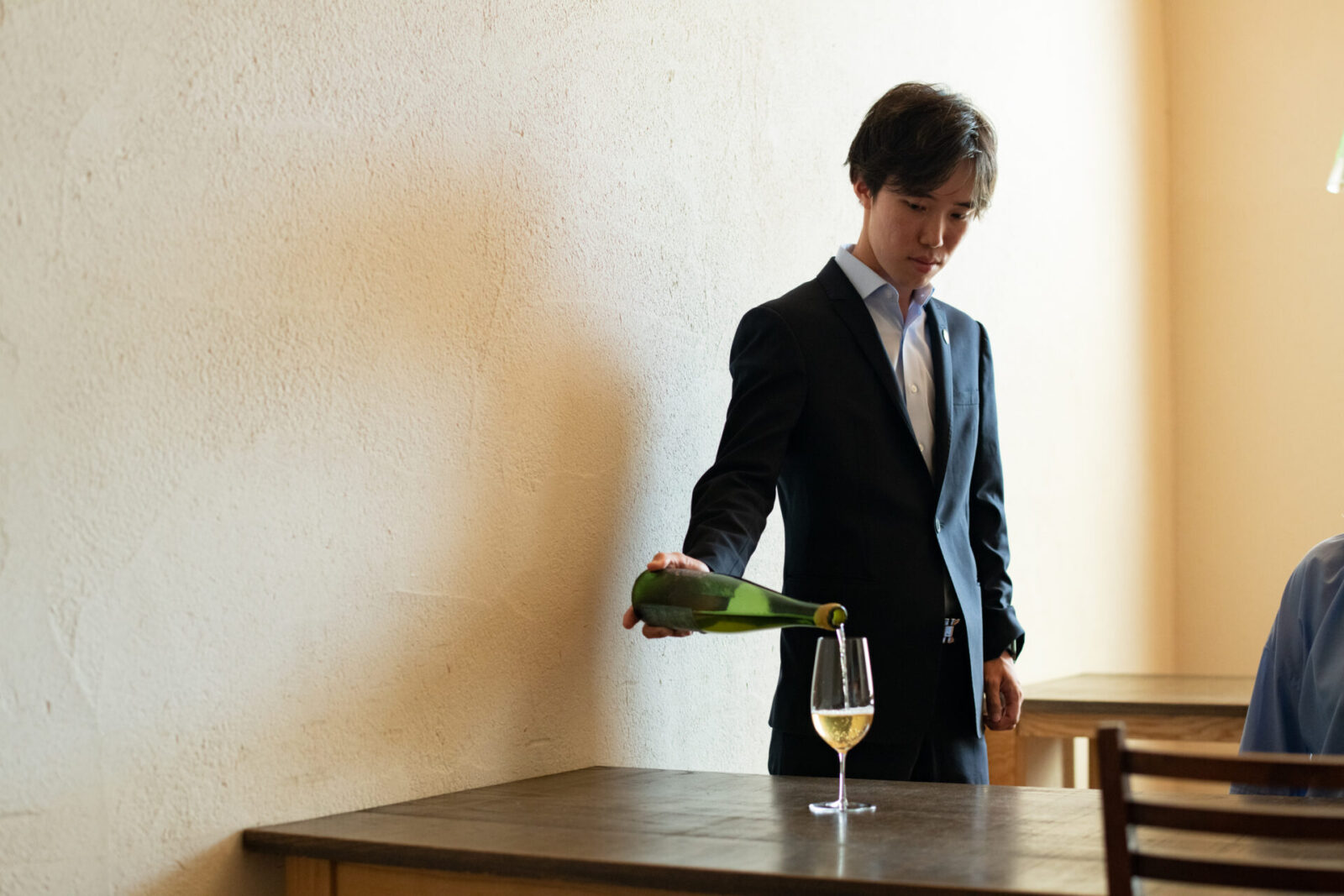
Takamatsu’s goal from the start was to get certified, so he continued to study hard. However, the path to become a Master Sommelier is a long one.
There are four levels of exams for sommelier certifications, but exams are only held once a year. Level 1 is the introductory exam, Level 2 is the certified sommelier exam, Level 3 is the advanced sommelier exam, and Level 4 is the Master Sommelier exam.
The Level 1 and 2 exams are held at the same time. The examinees take a two-day class and then the exam on the third day. It is the same level as the sommelier exam offered in Japan, and you can pass it if you study hard enough.
Takamatsu took the Level 1 and 2 exams in 2016 and passed them in one go.
After passing the exam, the restaurant that Hirose worked for invited him to work as an apprentice under Hirose. Takamatsu recalls, “At the time, I was so eager to study wine that it was all I could do.”
The Level 3 exam is only held once every two years in Sydney, and Takamatsu only had one year to prepare for the next exam in 2017. If he failed this exam, he would have to wait until 2019 to take it again so he was determined to pass.
After a year of intense studying, he passed the Level 3 exam with flying colors.
“The Level 3 certification is enough to get a job at almost any restaurant in the world, so I don’t think many people pass it in one shot. I just barely passed myself.”
Knowing 7000 wines at the back of your hand
It was smooth sailing for Takamatsu up to this point, but the difficulty of passing the Level 4 Master Sommelier exam was on a whole other level.
First of all, the exams are held by invitation only. Only 50 people in the world are invited to take the exam. According to Takamatsu, there is a waiting list in the United States of over 800 people waiting to take the exam.
The day that Takamatsu passed his Level 3 exam, he signed up for the Master Sommelier exam that was to be held the next year in London. In the autumn of that same year, he obtained a working holiday visa to work in the UK.
“Even though I did not know if I would be allowed to take the exam yet, I decided to go to London. I thought it would work to my advantage to be in the country where the exam would be held.”
Takamatsu’s determination can be seen in this decision to move overseas even though there was no guarantee that he could take the exam.
Perhaps the judges recognized his determination, and in March 2018, Takamatsu received his invitation to take the Master Sommelier exam.
The following month, Takamatsu moved to London.
In London, he began working at hide, a newly opened fine dining restaurant (now a one Michilin star holder). The restaurant used state of the art technology to manage their entire wine list of about 7 thousand bottles which was kept in a wine shop that they owned nearby.
Takamatsu needed to have thorough knowledge of all 7 thousand wines in order to serve the customers.
“I can usually tell which region the wine is from by looking at the label, so I can give one or two pieces of information from there. Many customers tend to ask for dry wines, so I make sure I know which wines are dry and sweet. Besides that, there are certain pieces of information, such as fruitiness, richness and acidity, that I keep in mind. There are a few key points to remembering wine.”
What are these key points?
“For example, I sometimes describe a young and fresh wine as having a flavor that is like a green stem or green pepper, but if the customer is someone who is very knowledgeable about wine I would describe it as ‘methoxypyrazine.’ For a more mature red wine, I may describe it as having a tobacco, tanned leather or mushroom like flavor. For white wine, I often say it is like honey or white mushrooms.”
“The key to describing wine is expressing the complexity of alcohol, acidity, and tannins, as well as length and balance. For example, a wine with high acidity is ‘refreshing’ and a wine with low alcohol is ‘smooth.’ I enjoy explaining wines, so it was fun for me.”
Takamatsu had a big advantage in his studies because the director at hide was a Master Sommelier, so he received a lot of advice on how and what to study. This kept Takamatsu’s motivation to learn very high.
Keeping studying fun
Takamatsu spent all of his money, besides the amount he needed to pay on rent and necessities, on buying wine to taste. Everyday after work, he would go home and study wine.
He set up a study plan to spend one week on Italian wines, the next week on French wines, and so on. He studied books and online resources to deepen his knowledge.
We imagined that studying for the Master Sommelier exam would require one to spend many hours studying each day, but it appears Takamatsu’s case was not so.
“I think it is important to keep studying fun. I didn’t study when I was tired and even if my studying did not go according to plan, I didn’t worry too much about it. I think I was able to keep up on my studying because I wasn’t too strict about it.”

The Master Sommelier exam is considered to be one of the hardest in the world, but Takamatsu talks about it quite light-heartedly.
He said he found the key to keeping his studies fun in a seemingly unrelated hobby.
Takamatsu says he is such an avid gamer that he once played Pokémon and Monster Hunter for 24 hours straight. He says his total game playing time is over 2 thousand hours. Even in the gaming world, this is considered a very high number.
In games such as Pokémon and Monster Hunter, there is an element of collecting things.
For Takamatsu, wine is something that is fun. He found that, just like when he is playing games, he could collect information on wines using his overwhelmly high concentration skills.
The hardest challenge of all: blind tasting
Six months after Takamatsu moved to London, the Master Sommelier exam was held in September 2018.
The exam is held in three parts: a verbal exam that tests your knowledge on wine theory (each question must be answered in 45 seconds), a practical restaurant wine service and salesmanship exam, and the brand tasting exam where the label of the bottle is hidden and one must name the wine correctly.
In the brand tasting exam, three white wines and three red wines are tasted in 25 minutes and the examinee must answer the grape variety, region, country of origin and vintage (year of harvest) of the wine.
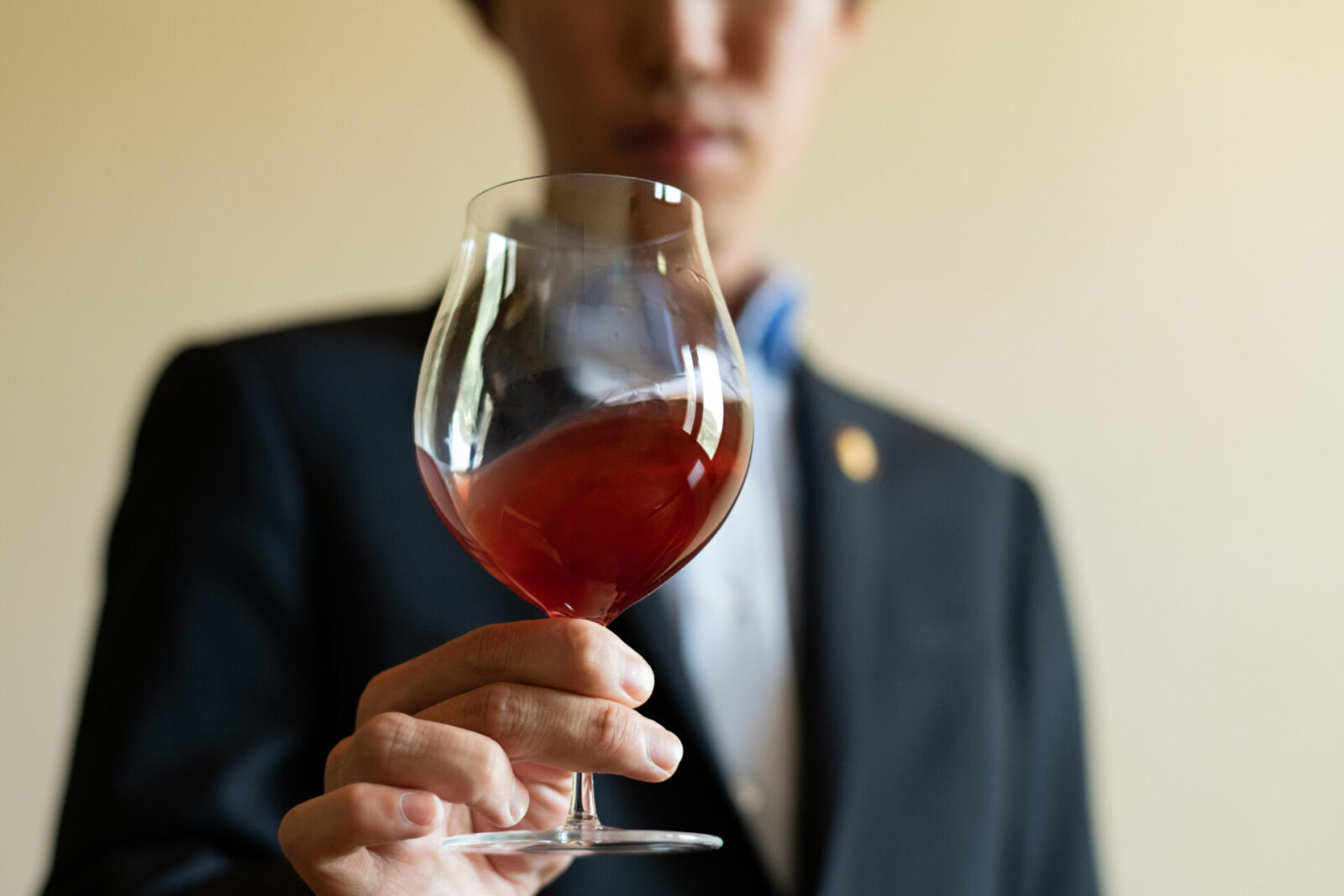
This exam is unique in that the examinees are not evaluated based on their total score, but there is a pass or fail for each of the three categories. If you pass one category, the credit is kept valid for three years so if you pass all three categories within three years you will be qualified to become a Master Sommelier.
In other words, the examinees are given a three year grace period. On the other hand, even with this grace period, only 3 to 8 percent of people succeed in passing the exam and getting the certification.
After taking this extremely difficult exam for the first time, Takamatsu succeeded in passing the verbal and practical exams, but he did not pass the blind testing exam.
Takamatsu tried again in August of the following year at another blind tasting examination that was held in Vienna, Austria. In this exam, the examinees had to identify the wines based on taste, color, viscosity, aroma, fruitines, and lingering flavors and balance.
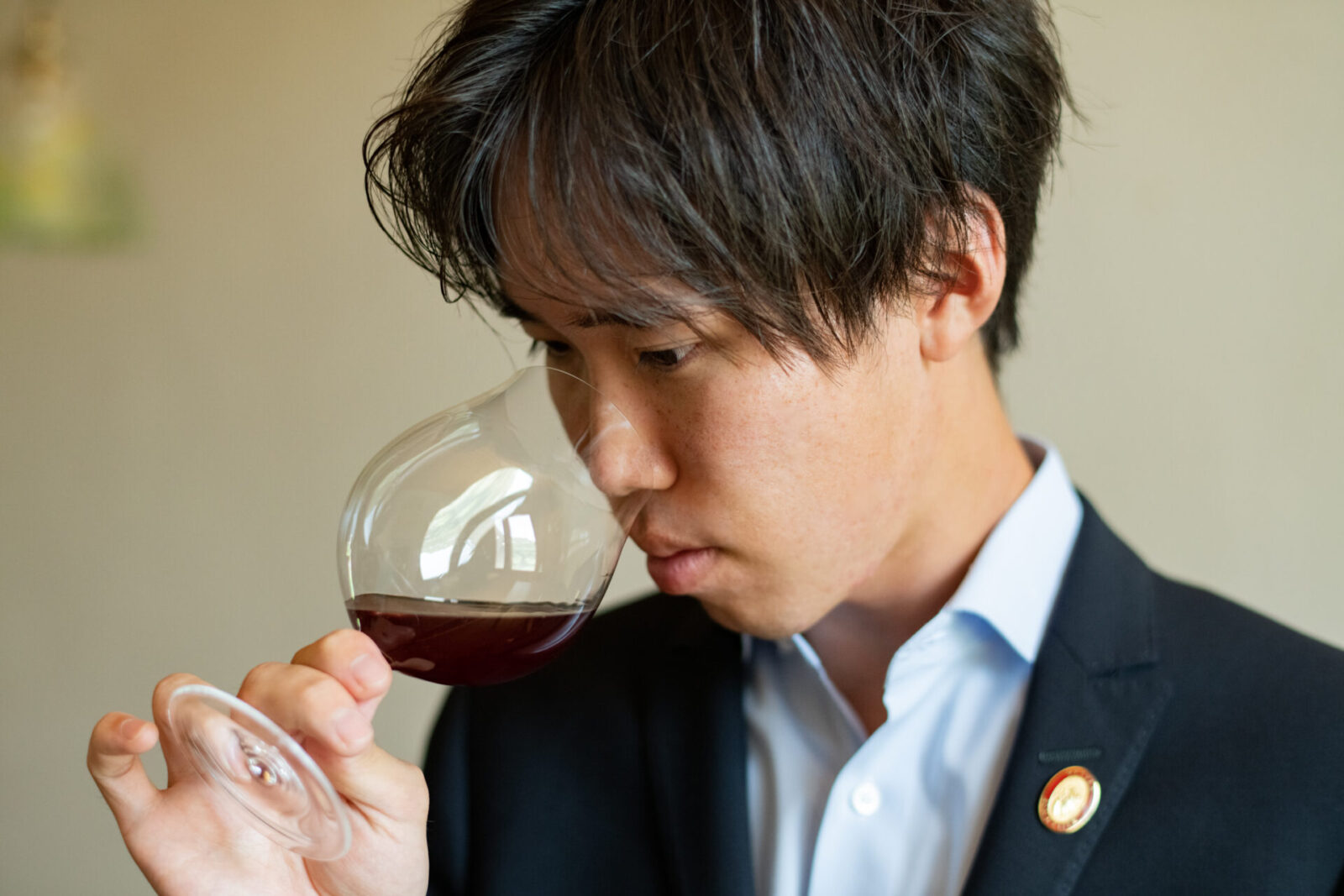
According to Takamatsu, he narrows down the possibilities to about two or three wines, and answers the one which he thinks is the most likely.
In order to pass the exam, the examinee must guess four out of six wines correctly. The time limit is 25 minutes, but there is no clock inside the venue. In order to have enough time to give an answer to all the bottles, the examinees have an average of three and a half minutes to provide an answer for each bottle.
When all the examinees finish with the exam, each of them are called upon individually to be told their results.
What was the result of Takamatsu’s second try?
When Takamatsu entered the room a judge told him, “The first and second tastings were completely off.” Takamatsu knew this because he was not confident in his answer for these two.
The judge continued, “However, you got the remaining four right so you have passed. Congratulations!”
At that moment, Takamatsu became the second youngest person in history and the first Japanese person to be awarded the title of Master Sommelier.

Takamatsu looks back to his experience and the reason he passed.
“I think there is a big psychological aspect and the difference is whether you take the exam thinking that it is very difficult, or you take it thinking that you will surely pass. The wines that are used for the exam are very unique in character, so if you can remain calm and think like you usually do, there is no reason why you can’t get it right. I think that is the most important part in making the correct judgment.”
Although Takamatsu speaks so lightheartedly that he makes the exam sound easy, sommeliers around the world spend years of sacrifice and effort in order to pass this exam.
As mentioned before, there are only 274 people who have succeeded in passing this exam, making it one of the hardest in the world.
After a French man who previously passed the Master Sommelier exam at the age of 23 lost his certification, Takamatsu officially became the youngest Master Sommelier in the world.
Onto the next endeavor
After Takamatsu achieved his goal of becoming a Master Sommelier, he returned to his home in Australia.
Soon after, the world was hit by the coronavirus pandemic. While being stuck at home, Takamatsu thought about what to do next, and he decided to aim for a new certification.
That certification is the Master of Wine.
The Master of Wine is recognized by The Institute of Masters of Wine in the United Kingdom and is known as the “MBA of the wine world.” It requires a wide range of knowledge, including expertise in winemaking, viticulture, and the wine business.
This is another extremely difficult exam and only 400 people in the world have passed. Takamatsu became interested in the certification when he learned about Kenichi Ohashi, the only Japanese holder of the certification.
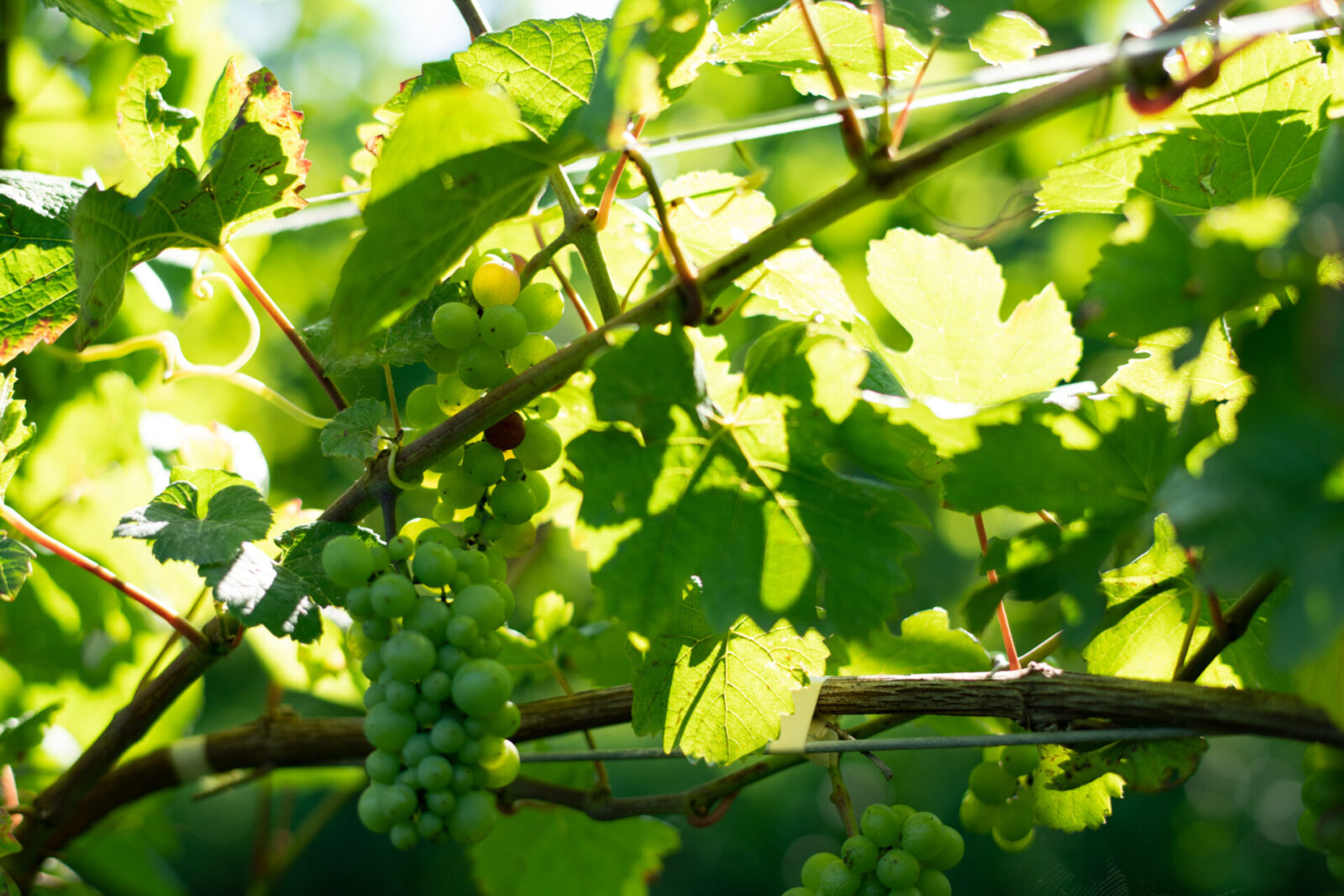
Furthermore, there are only three people in the world who have successfully passed both the Master Sommelier and the Master of Wine exams.
One of them was the world-renowned sommelier Gerard Basset, who passed away in 2019. The holding of these two certifications is a feat that would make one’s name be known in the wine industry.
As a first step toward his new endeavor, Takamatsu felt he needed experience working in a winery because the Master of Wine focuses on the skills and knowledge needed to make wine.
He contacted Takahiko Soga of Domaine Takahiko winery and inquired if he could be an apprentice there. Takamatsu had no previous relation with Soga, so why did he choose Domaine Takahiko?
“One time when I was in Japan in 2017, I had the chance to drink Mr. Soga’s wine. I was not necessarily super impressed at the time, but in hindsight it was a really amazing wine. It was a wine that grew on me over time.”
“I have tasted many wines from all around the world, but Mr. Soga’s wine has a very unique and original flavor that is characteristic to the Japanese palate. He makes a single variety of wine on a scale that can be achieved by a single person. I thought it would be great if I could do something similar and make my own unique wine that I myself would want to drink.”

Unfortunately, his request was initially declined by Soga, who said that he did not accept apprentices.
In his email Soga wrote, “I only work with people who are serious about starting a winery in Yoichi Town in the future.”
After receiving this email, Takamatsu thought about what he really wanted to do in ten years time.
The image that came to mind was starting his own winery. He told Soga about his future vision and Soga told him that there is a community-reactivating cooperator squad that he could join to move to Yoichi Town.
As he did when he aimed for the Master Sommelier exam, Takamatsu moved quickly from there toward his new goal.
Living and working in Yoichi Town
It was Takamatsu’s second year since coming to Japan when we visited, and he was out working in the grape vineyards of Domaine Takahiko.

Even though he had achieved the feat of becoming a Master Sommelier, he does not seem to regret leaving that path.
“I think I am better suited for being on the creation side over working in the service industry. Even when I was working as a barista, I was happier when customers came because they enjoyed the coffee I made, rather than liking me for my personality. I think I inherited that DNA from my father.”
“Everyday I find myself enjoying the work here. The time I spend brewing and the process of making wine is especially nice. I get a real sensation of getting closer to my goal.”

Soga quickly became Takamatsu’s mentor after he joined him in Yoichi Town.
He says he gets concrete advice on not only grape cultivation and wine making, but also on how to prepare to open a winery in the future.
Takamatsu grew up in Sydney and this is the first time he is living in Japan. It is also the first time he is farming and making wine. Although it would seem as though he would have a lot to get used to, it seems this environment suits him well.
Contrary to the tight expression on his face when he was wearing a suit and holding a bottle of wine as a sommelier, he looks relaxed in the vineyards and has an easy smile on his face.
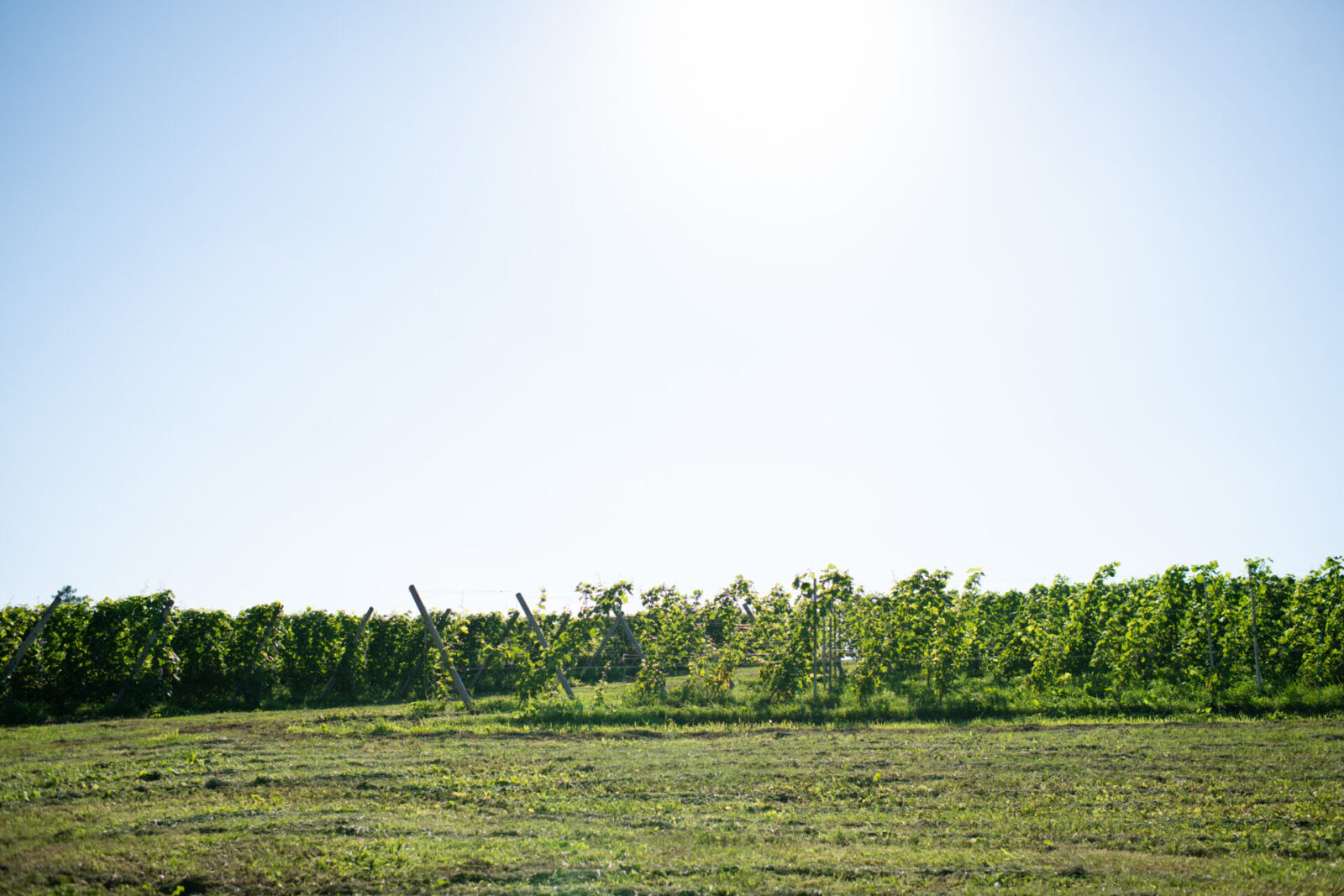
He says he goes to work in the morning to the vineyard and when he returns home his wife is there waiting for him. She makes him dinner and once or twice a week they share a bottle of wine that Takamatsu has selected. Takamatsu says that this peaceful lifestyle makes him the happiest.
“Ever since coming to Yoichi Town, I haven’t felt any stress. I lived a pretty carefree life in Sydney as well, but I am definitely enjoying myself more here.”
Whether it be five years or ten years in the future, Takamatsu plans on opening a winery in Yoichi, as he promised Soga.
Master Sommelier Toru Takamatsu is now on a path to achieving his goal of becoming a Master of Wine. As he spends his time in the new found solace of Yoichi Town, we look forward to seeing what kind of wine he will produce here one day.
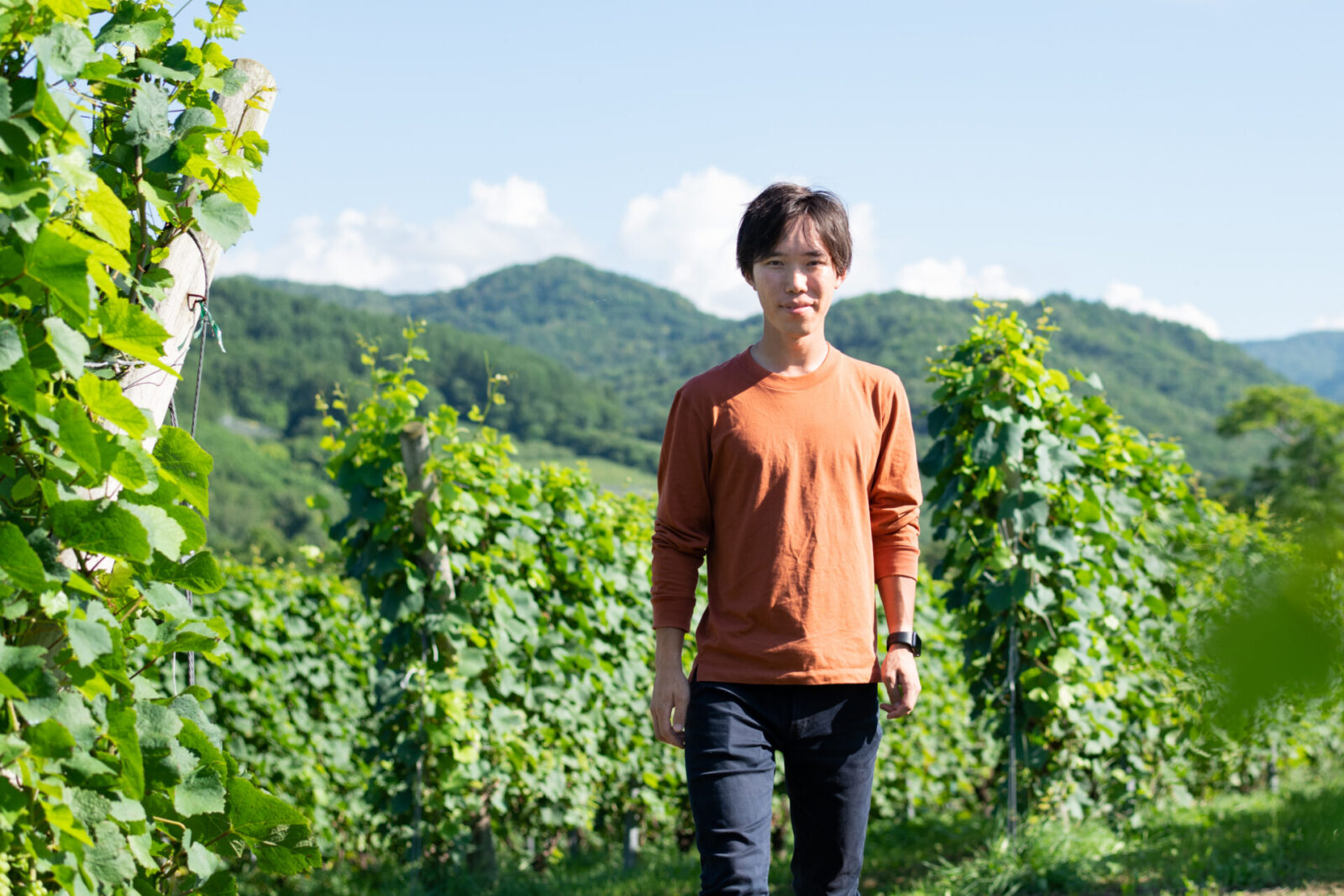
Photo:Yuko Kawashima
Translation: Sophia Swanson
Editor. Born and raised in Kagoshima, the birthplace of Japanese tea. Worked for Impress, Inc. and Huffington Post Japan and has been involved in the launch and management of media after becoming independent. Does editing, writing, and content planning/production.
